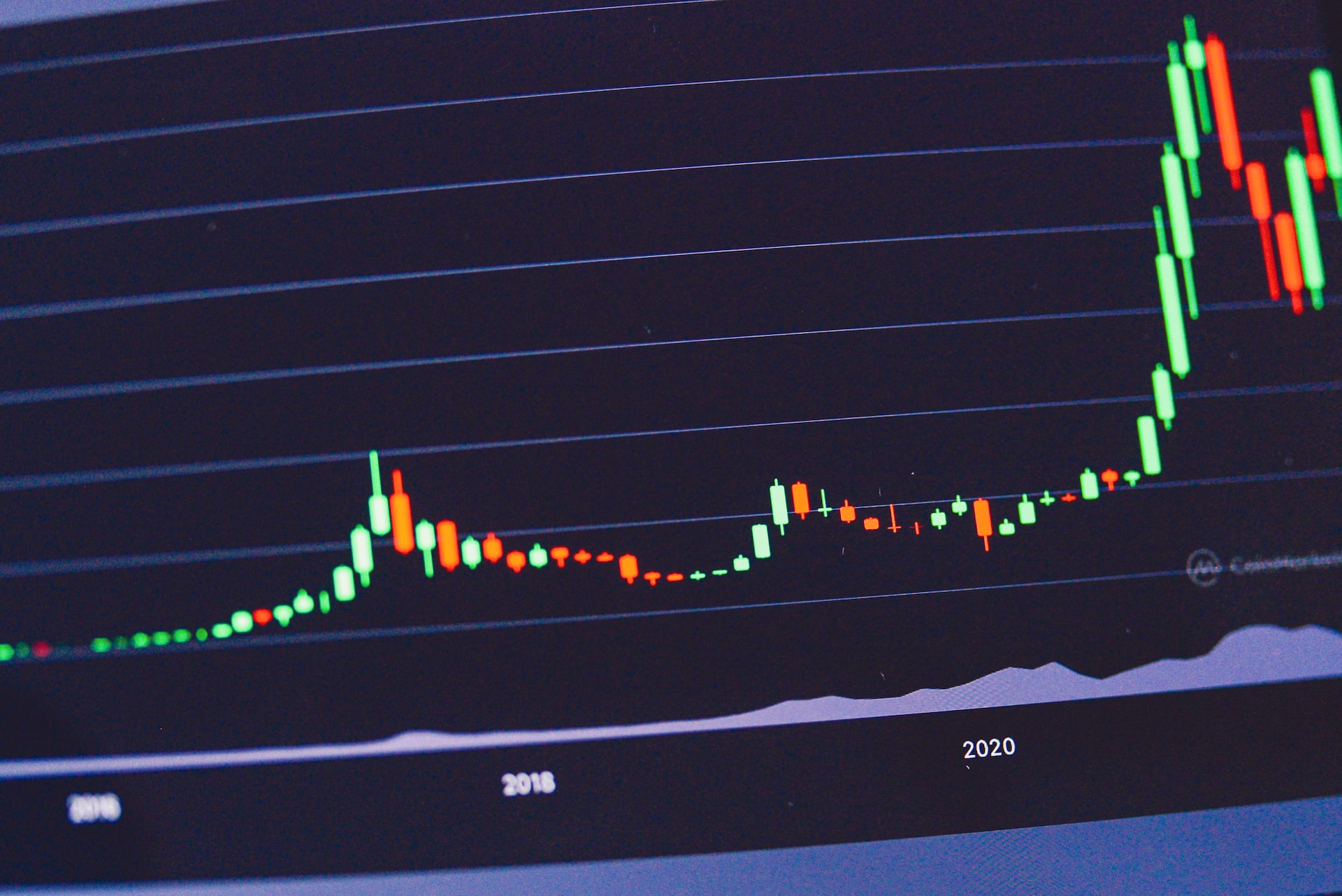Cryptocurrencies have gained plenty of attention in recent years. These assets have risen astronomically, but investors have asked many questions about Bitcoin price movements and other cryptos. Some investors wonder how crypto works, why the blockchain and decentralized finance are important, and how cryptos get their valuations. You should know how different cryptocurrencies work before making an investment. Our guide will catch you up on what determines crypto’s intrinsic value and how to get started.
Understanding Cryptocurrencies: Overview
Cryptocurrencies are intangible assets that use blockchain technology to enable more transparency. A centralized power can’t influence the supply of Bitcoin or any other decentralized network. This perk is a big deal as we see inflation at 40-year highs in large part because the Central Bank printed trillions of dollars during the pandemic. Eliminating the middleman also eliminates transfer fees for overseas financial transactions, a big deal for families living in different countries.
Crypto is a futuristic currency, but price swings can get wild with any futuristic asset. The price of Bitcoin went from under $1,000 in 2016 to over $19,000 in 2017. The same asset fell to $3,000 by the end of 2018. Crypto’s volatility hasn’t gone away, making some people instant millionaires and causing others to lose their fortunes.
Cryptocurrencies’ Intrinsic Value
Each cryptocurrency holds intrinsic value, but arriving at this valuation gets more confusing for digital assets. Stock investors compare a stock’s market cap to income, revenue, and similar metrics. Real estate investors can compare the average price per square foot, vacancy rates, and other location-specific metrics. Since cryptocurrencies are currencies, they don’t produce revenue. Instead, Crypto acts as a medium of exchange that people can use to buy goods and services.
We’ll discuss what goes into assessing a cryptocurrency’s intrinsic value. Analysts can have varying price targets, but these indicators will help you determine if an asset has staying power.
Utility
While you may not see new coins and NFTs get exchanged for goods and services, thousands of businesses accept Bitcoin, similar to fiat money. Over 36,000 Bitcoin ATMs have popped up in the United States and worldwide, giving the currency staying power. Some of these Bitcoin ATMs support additional cryptocurrencies. A cryptocurrency’s utility increases as it gets supported in more ATMs, and merchants accept it as a method of purchase.
Competition/Scarcity
Cryptocurrencies rely on people to drive their valuations. Increased competition makes it more difficult for altcoins to gain momentum and establish user bases. As a result, cryptocurrencies struggling to gain traction may see flat or declining prices. Conversely, the cryptocurrencies that thrive in the competition can see strong upward price movement.
Supply and Demand
Supply and demand dictate economic activity, investment returns, and many of society’s functions. These two forces continuously interact with each other in the crypto landscape.
Some cryptocurrencies have a limited supply, making them more valuable. As an example, only 21 million Bitcoins exist, and as more Bitcoins get mined, fewer become available. Strong demand for fewer available Bitcoins has generated long-term growth for the asset. On the other hand, some cryptocurrencies have vast supplies, with billions of them in existence. These cryptocurrencies benefit less from the supply side, but their prices can still rise if they experience strong demand.
Having more money in the bank helps you capitalize on rising demand. Tracking your spending can reveal opportunities to save income and increase your investments.
Cost of Production
Producing cryptocurrencies requires several computers. When crypto was new, it was easier for anyone to mine crypto. As demand soared, companies and entrepreneurs invested in digital infrastructures to mine cryptocurrencies. This network of computers verifies blocks on a blockchain. Whoever verifies the new block receives the rewards within that block (i.e., newly minted Bitcoins). Many miners compete with each other to solve a limited number of problems, thus raising the cost of production.
Higher production costs lead to higher crypto prices. If a restaurant’s expenses suddenly rise 10%, that restaurant will raise its prices by 10% to compensate. The same concept applies to crypto. Miners will reduce their activity if crypto prices decline. This process involves a proof of work system. A proof of stake system gives crypto to existing holders through a stake consensus instead of requiring miners to solve complex problems. It’s a simpler proof model that makes cryptocurrencies more environmentally friendly and viable than proof-of-work systems.
Governance and Technological Advancements
Cryptocurrencies are decentralized, but they still undergo changes. For example, Ethereum is in the process of switching from a proof-of-work system to a proof-of-stake model. How can Ethereum and similar cryptos make changes like these without a central authority? While they are decentralized, cryptocurrencies have governance built into them. Coin holders can raise concerns and vote on initiatives, such as deciding between a cryptocurrency’s system of proof.
Investors like having some say, but they also want to avoid rocking the boat. The government can influence stock valuations through political policies and other actions. Political turmoil can create volatility in the markets. Limited crypto governance gives people enough sway to raise some issues without creating too much uncertainty.
How Do Users Increase Cryptocurrencies’ Value
The crowds impact asset prices. We see this with intangible assets like crypto and tangible assets like real estate. People can actively increase a cryptocurrency’s valuation or lead to a digital currency’s downfall. We’ll discuss some of the ways users increase cryptocurrency valuations.
Mass Adoption
When people rapidly adopt a cryptocurrency, the price skyrockets. We experienced this trend in 2021, with Dogecoin and Shiba Inu going from unknown coins to mainstream digital assets. A sudden surge in demand can trigger mass adoption and rising prices. Mobile banking apps make cryptos easier to access. They have removed the barriers of entry that discouraged early investors from entering the fray.
Trading
Retail investors aim to make a profit by capitalizing on real-time price fluctuations. Traders hope to buy low and sell at all-time highs on cryptocurrency exchanges. Lower transaction costs have encouraged more traders to participate in crypto markets and capitalize on any crypto upswing they find. Trading activity impacts crypto volume and can inspire more traders to enter the space. People may hear about incredible gains from cryptocurrency trading and try to mimic those returns.
Holding For Dividends
Some cryptocurrencies pay dividends through a proof-of-stake model. People with cryptocurrencies in their accounts will receive a dividend that increases their crypto positions. Holding preserves a cryptocurrency’s value, and dividends create the perception of increased wealth. Dividends won’t impact the market cap or the total value of your holdings. For example, a $100 crypto offering a $1 dividend falls to $99 upon giving you the $1 dividend. You’ll still have $100 worth of crypto, but you’ll have more coins in your digital wallet at a lower market price per coin.
Mining
Crypto mining enables people to tap into untouched cryptocurrencies. Crypto mining increases supply and makes these assets functional. Every crypto asset needs miners to tap into reserves.
Increasing Utility
Merchants play a significant role in crypto’s adoption. Long-term crypto enthusiasts dream of the day when they can buy and sell goods and services with Bitcoin. They yearn for the day when sites like Amazon accept crypto payments. The crypto community has generated speculation and rumors about companies like Walmart and Amazon accepting crypto payments in the past. Even though these companies currently don’t offer crypto as a form of payment, thousands of companies already do.
Each company that enables crypto payments increases the currency’s utility. Bitcoin ATMs further normalize cryptocurrencies and strengthen utility. Some banking apps let you accumulate crypto instead of making you rely on fiat currencies. Not every cryptocurrency reaches this level of utility. Some investors buy altcoins with low market caps, hoping that they gain utility in the future.
Media Coverage/Celebrity Influence and Whales
The media enjoys covering the daily price movements of assets like crypto. They regularly cover top cryptocurrencies such as Bitcoin and Ethereum, but their coverage can lead to a significant appreciation for certain altcoins. Their coverage of Dogecoin and Shiba Inu brought more attention to the emerging assets. Celebrity influencers like Elon Musk also promoted those cryptocurrencies and created more dialogue around these digital currencies. Whales can also make significant purchases and sales that impact crypto prices.






